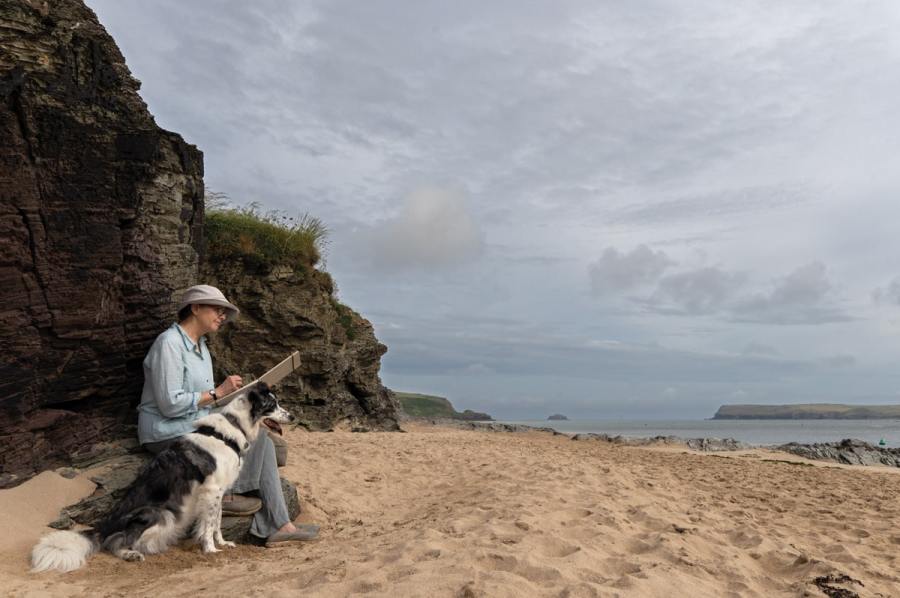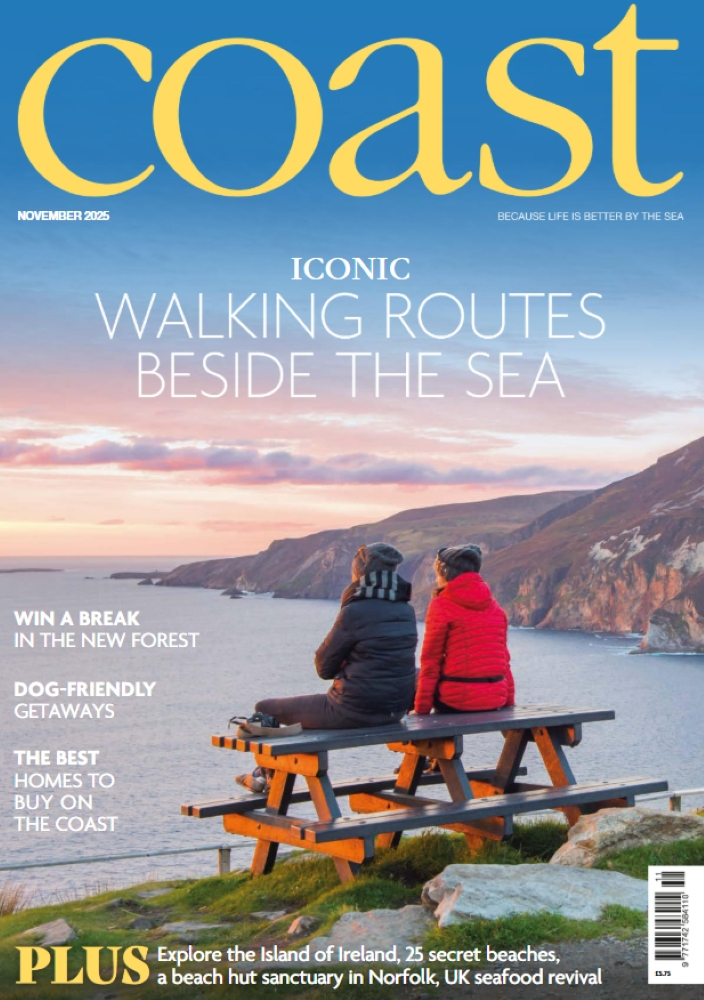Acclaimed landscape artist Sarah Adams shares how the tides, geology and ever-shifting light of the Cornish coast shape her immersive oil paintings
Interview Susie Atkinson
I’ve always felt the magnetic pull of the coast. My childhood was spent in landlocked Berkshire, where the closest I got to waves was a caravan holiday and the occasional soggy sandcastle. But even then, that first glimpse of the sea after hours in the car was always thrilling, like arriving at another world.
I first moved to Jersey in my early teens, as that was where my grandmother was from, and that’s where the coast really took hold of me. It wasn’t just a backdrop any more – it became a constant presence.

When I began drawing and painting, I found myself returning again and again to the same stretch of the intertidal zone, where the sea meets the land in that endlessly shifting, liminal space.
I’m drawn to the intertidal zone because it’s never the same twice. Every time I return, the tide has changed everything. The sand has shifted, new cracks have opened, the light has moved on. There’s a sense of trespass in being there – a feeling that I’ve entered a space that mostly belongs to the sea, and that I’m lucky to borrow it for a few minutes at a time.

LIVING IN PADSTOW
These days I live and work in Padstow, North Cornwall. I’ve been here since 2006, and the coast still surprises me. The geology of this region is extraordinary – 400 million years of metamorphic drama shaped by pressure, heat and tide.
The rock formations are rich, mineralised, and sculpted into architectural wonders by the forces of nature. You can walk from Bude to Land’s End and find something completely new around every corner – slate streaked with quartz, barnacle-smoothed ledges, collapsed caves, and monolithic stacks that seem to rearrange themselves with the tides. Some subjects are easy to reach, while others are more remote – places you can only get to by kayak, or during a spring tide at just the right time of year.
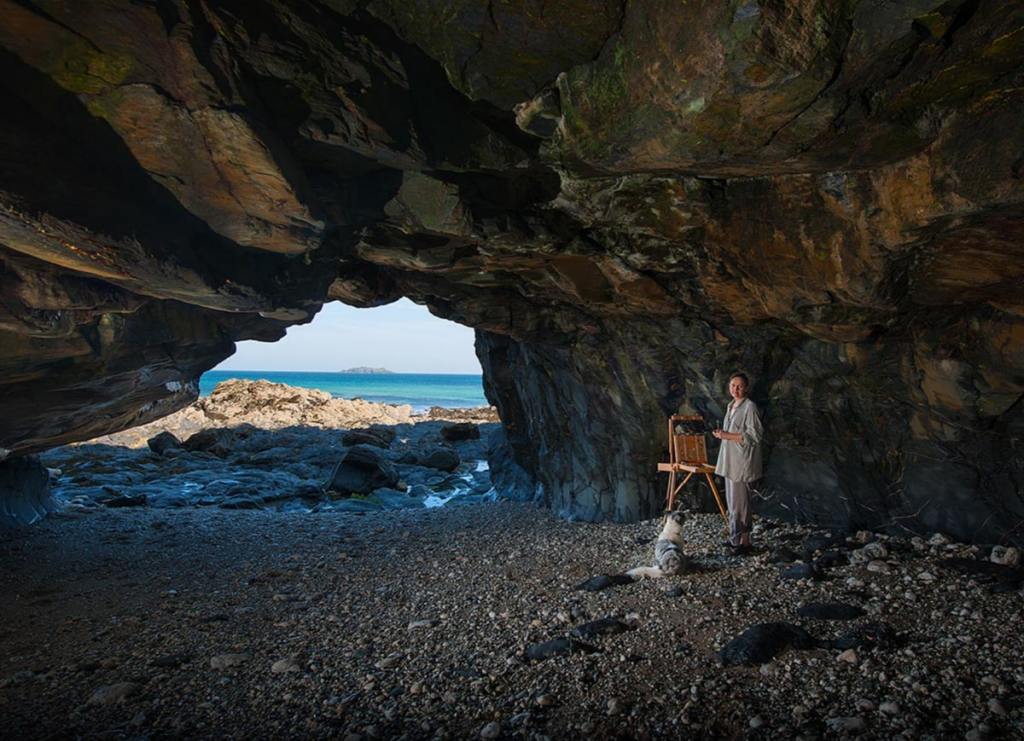
Caves are the focus of my current paintings and I am both frightened and fascinated by them. There’s something cathedral-like and awe-inspiring about caves – vast, shadowy spaces that open out to light.
They’re ever-changing, shaped by tides, time and geology, and for me, that endless transformation is part of the magic.
I’m not interested in rendering familiar views. It’s about building a memory of being in that secret space – the experience of light shifting, rock formations evolving, the sound of the sea. I return to the same sites over and over because they’re never the same twice. It’s not just what I see, it’s what I feel when I’m there.
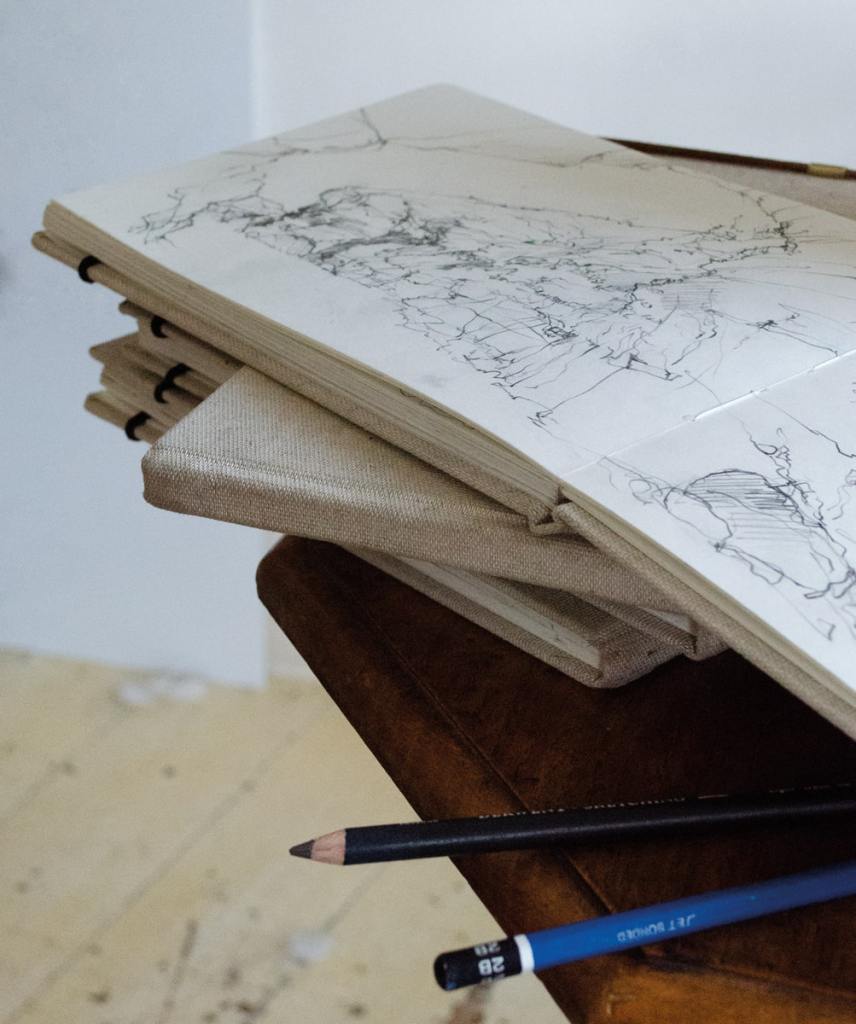
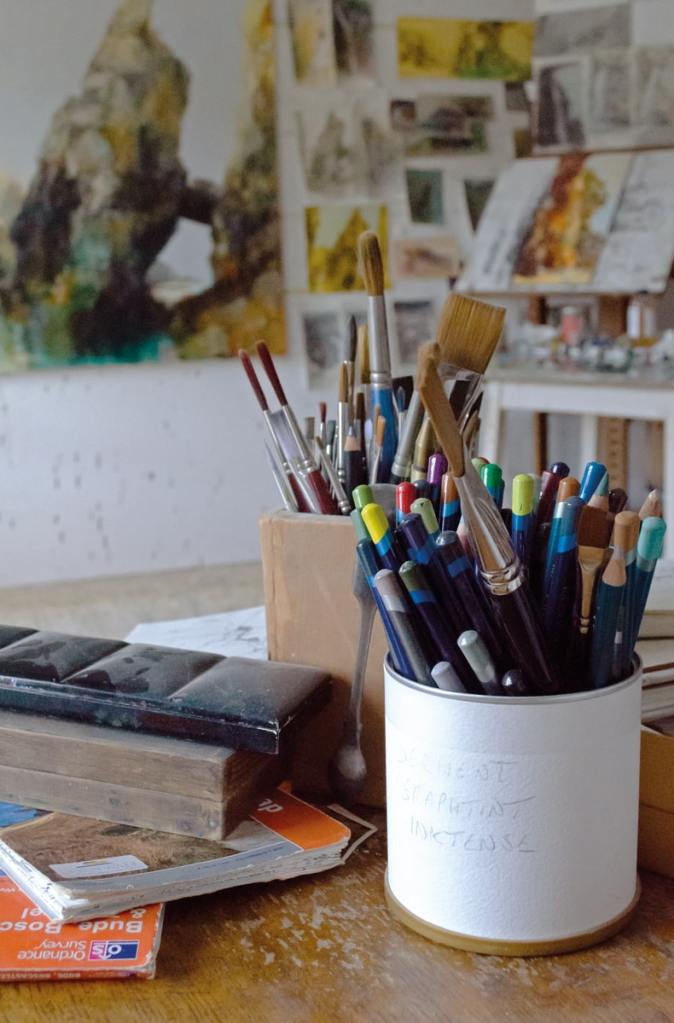
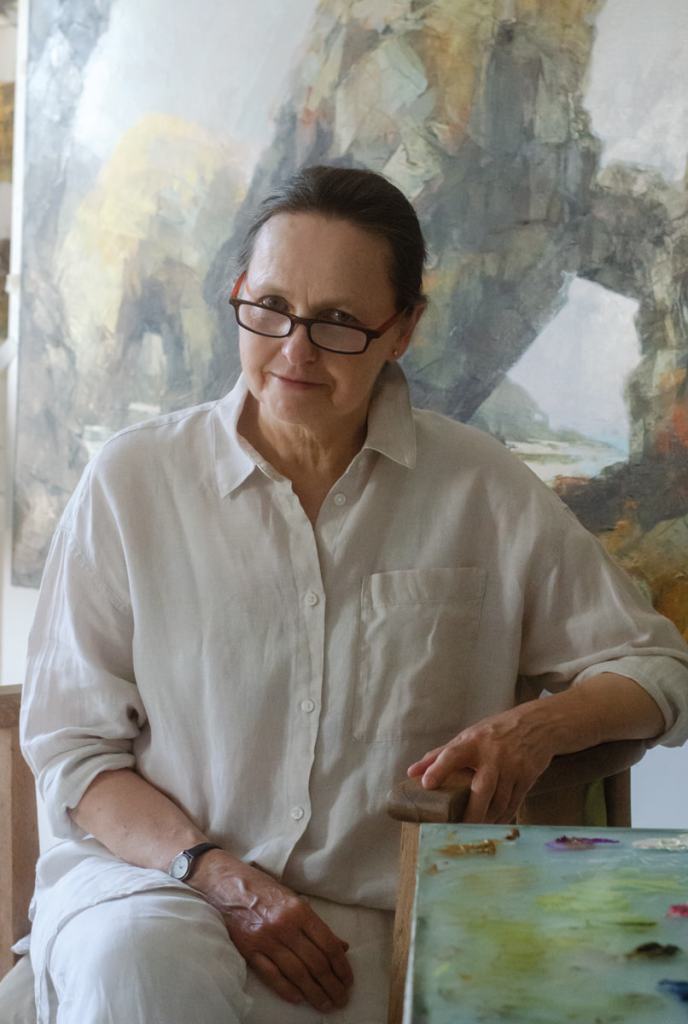
THE FEELING OF A PLACE
I don’t work from photographs. For me, it has to be drawing. Sitting in a cave, or on a ledge, or on my kayak if that’s the only way to get there, I make pencil sketches and small colour studies from direct observation. Each mark demands total attention. Drawing forces me to look properly – to take in every grain of sand, every curve of slate, every shimmer of light across the surface of a rock pool. And because I work quickly – often with the tide ticking like a clock behind me – it becomes an exercise in memory too. The sketches are only part of it. The feeling of the place, the sounds, the shadows, they all come back with me.
Back in my Padstow studio, surrounded by books, geological specimens and cluttered sketchbooks, I begin the process of reconstructing what I saw. I work in oils on linen.
The big paintings are slow – sometimes I spend over a year building them up in glazes, layer after layer. There’s often eight or nine paintings on the go at once, drying between sessions. Some coalesce slowly around one anchor point, a horizon line perhaps, or a patch of rock that catches the light. The process is intuitive, but also meticulous.

A good painting walks the line between memory and observation, abstraction and representation.
People often comment that my paintings have a sort of ordered chaos to them and I think that’s exactly it. The sea constantly rearranges the scene, but in doing so it reveals patterns too. There’s a rhythm to the chaos. In winter, the sand levels drop, exposing smooth, barnacle-free rocks. In summer, the beach replenishes itself. I’ve worked on the same rocks across all four seasons and never seen them look the same twice.
CURRENT EXHIBITION
My current exhibition at The Maas Gallery is called From Darkness into Light, and that title came out of the way I’ve been exploring caves and arches, moving from shadow into brightness, from shelter into exposure. Much of the work was done at Perranporth, Chapel Porth and Nanjizal where great stone arches rise like cathedral doorways.
There’s one spot I remember vividly – a cave running under a stack at Watergate Bay, only accessible at the lowest of tides. I had to wade in with a wetsuit and sketch fast before a long wave came in and swept me off my feet. It’s these moments of physical encounter with the landscape that drive the paintings – the adventure, the effort, the risk, and the stillness of finally sitting down to draw.



I think my relationship with the sea has become more personal over time. In my early years, I painted from a more distanced perspective. These days, I want to take the viewer right inside the cave with me, to show them what it feels like to sit in the shadows and look out at the light.
Padstow has been good to me. It’s a small town with a huge heart, and from my home in the old town, I can reach the coast path in five minutes.
My collie, Dab, comes too (she’s not a fan of waves but she’s keen on a good cliff walk). The studio is a jumble of drawings and works in progress, so I often feel like the tide follows me home.
I’m lucky. I’ve found my subject, and I know I’ll never run out of coastline to explore. The British coast is vast and varied, and while North Cornwall is home now, I still have sketchbooks from Jersey and beyond, records of time spent watching the light change across the stones. Each drawing is a doorway, and each painting is an invitation: come and look again
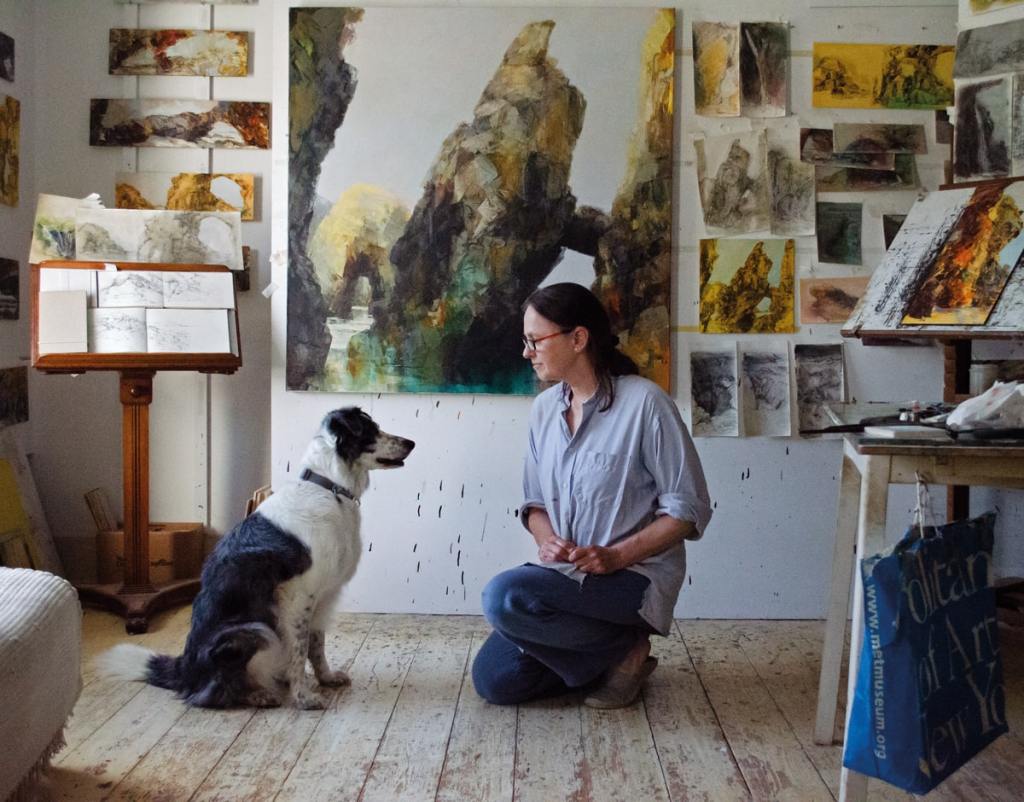
Sarah’s latest exhibition, From Darkness into Light, runs from 8-24 October at The Maas Gallery, London. Her work is also available from The Padstow Studio. Visit sarahadams.studio and follow her on Instagram @thepadstowstudio.

